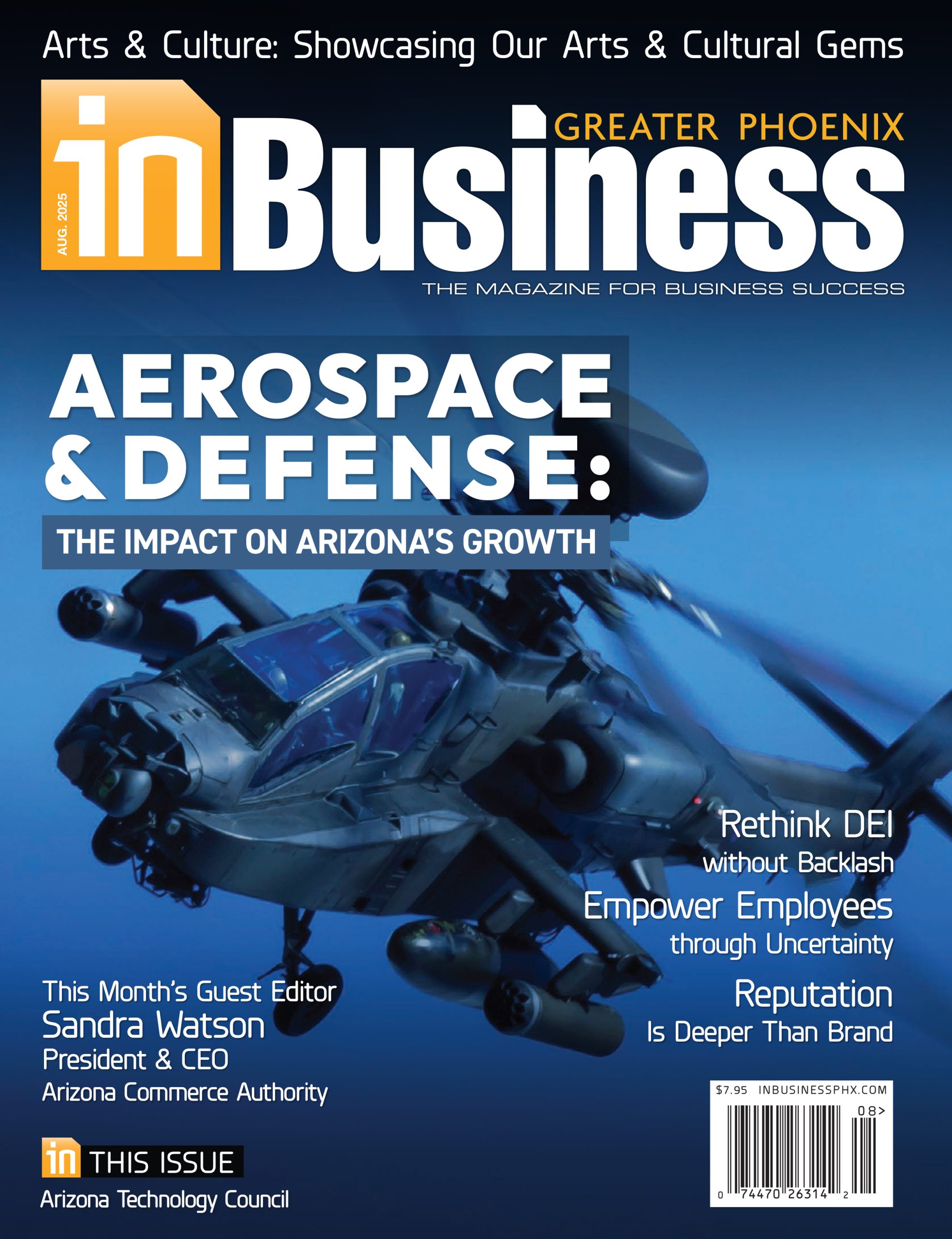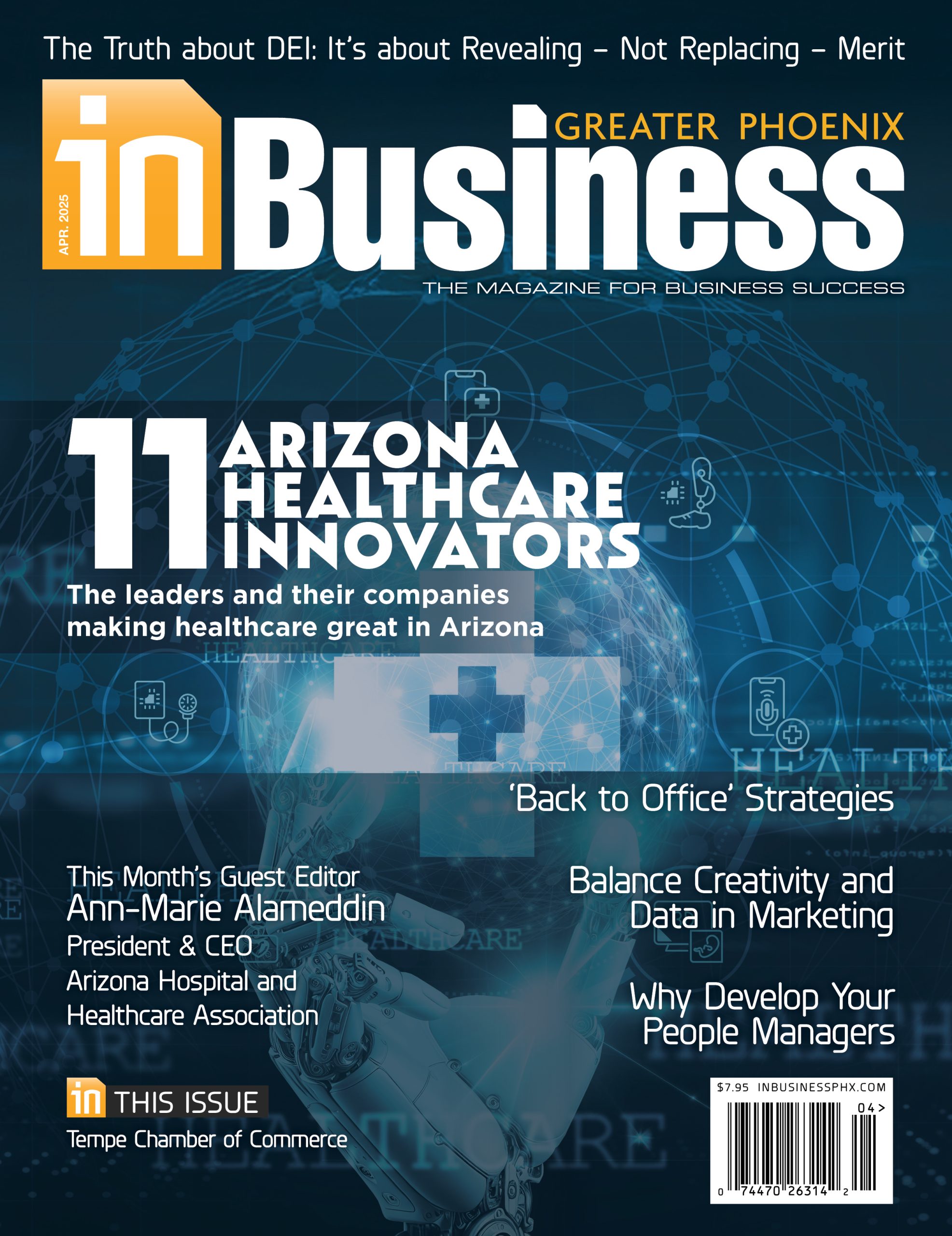 The semiconductor industry — foundational to everything from smartphones to fighter jets — is facing a widening talent gap. As global demand accelerates, driven by artificial intelligence, electric vehicles and national security needs, the shortage of skilled workers has become one of the most urgent threats to stalling our innovative ability to lead in defense and competitiveness. In Arizona, where billions in chip manufacturing investments are pouring in, we are seeing firsthand what global demand and supply building looks like in real time. This workforce gap is emerging as a defining challenge we have to quickly solve.
The semiconductor industry — foundational to everything from smartphones to fighter jets — is facing a widening talent gap. As global demand accelerates, driven by artificial intelligence, electric vehicles and national security needs, the shortage of skilled workers has become one of the most urgent threats to stalling our innovative ability to lead in defense and competitiveness. In Arizona, where billions in chip manufacturing investments are pouring in, we are seeing firsthand what global demand and supply building looks like in real time. This workforce gap is emerging as a defining challenge we have to quickly solve.
Semiconductor manufacturing demands a highly specialized workforce — engineers, technicians, cleanroom operators and supply chain experts — yet education and training systems nationwide have struggled to keep pace. McKinsey & Company projects the global industry will need more than one million additional skilled workers by 2030. In Arizona, the Arizona Commerce Authority reports more than $205 billion in semiconductor investment since 2020, creating more than 25,000 direct jobs across manufacturing, packaging, R&D and workforce training. Home to major firms like TSMC, Intel and Applied Materials, Arizona continues to attract significant federal and private-sector investment — fueled by broad bipartisan support for the industry’s role in national security and economic growth. However, preparing a talent pipeline that matches this scale remains a challenge, especially for roles requiring specific technical skills or hands-on training.
In Arizona, fewer than 38 out of every 100 ninth graders go on to complete any form of postsecondary credential, and of those, only 18 complete a credential. Among the graduates, many graduate with qualifications that don’t align with high-growth or high-demand sectors, not to mention emerging industries like semiconductors. Technician roles, for example, are in high demand across every industry. In the case of semiconductors, entry-level jobs that once required an associate’s degree now often require industry-specific certifications or applied experience, allowing talent to skill up with less time and financial investment. This begins to spotlight credentials and ripe industry pathways primed for growth — especially for those starting at the bottom floor — because there are many directions for upward mobility.
At the same time, the challenge is that the career pathways into the semiconductor industry are often unclear — both because they diverge from the traditional four-year college track that society has long emphasized, and because the industry itself has rapidly evolved. Many of the most in-demand roles don’t require a bachelor’s degree but do require industry-specific training or credentials that are not published in areas where students are exploring options. This challenge is compounded by a broader lack of awareness about career pathways in general, making it even harder for students and job seekers to navigate emerging roles that are unique to this sector. Career transitions are frequently fragmented and slowed by a lack of access, awareness or guidance. A 2023 report from Pearson, a global education company that studies workforce trends, estimates that inefficient education-to-career transitions cost the U.S. economy $1.1 trillion annually — more than 5% of GDP.
The challenge in Arizona is twofold: Not only must the state grow the number of skilled workers entering the semiconductor industry, it must also ensure those individuals can clearly identify and access the pathways that lead to these careers. That urgency is already playing out on the ground. Labor market analytics firm Lightcast reports that semiconductor job postings in the Phoenix region rose nearly 50% year-over-year — outpacing the supply of talent to fill them.
This shortage affects far more than the typical aforementioned roles in the semiconductor sector. It extends to logistics coordinators, cleanroom technicians, metrology specialists and process operators — critical roles that support the industry’s growth and represent a majority of talent demand. Our largest gap in workforce typically remains in rural areas or untapped populations where there are few career insights and career-connected learning to key industries. We knew, more than a decade ago, that without a coordinated, statewide approach to workforce development, Arizona would risk falling short of its full potential as a national player in technology innovation, even before semiconductors became a necessary challenge to solve.
But in this challenge lies opportunity. Arizona is building a more connected talent ecosystem — through partnerships that link education, workforce systems and industry. The answer isn’t just more programs. It’s smarter alignment — and it’s already underway.
Did You Know:
- More than 1 million skilled workers needed globally in semiconductors by 2030 (McKinsey & Company, 2023).
- At least 70,000 projected demand in the U.S. (McKinsey & Company, 2023).
- 50% year-over-year growth in semiconductor job postings in Phoenix (Lightcast, 2024).
- Only 18 of every 100 Arizona ninth graders earn a credential (National Center for Education Statistics, 2022).
- Just 28% of technician jobs require a four-year degree (Georgetown University Center on Education and the Workforce, 2020).
 For more than 20 years, Amber Smith has been serving the Tucson community in a variety of roles, beginning her career working for the late Senator John McCain. Guided by a north star to serve and lead, Smith has worked in a variety of industries and roles that range from government affairs to CEO, all with the common thread of supporting and strengthening communities and economic development.
For more than 20 years, Amber Smith has been serving the Tucson community in a variety of roles, beginning her career working for the late Senator John McCain. Guided by a north star to serve and lead, Smith has worked in a variety of industries and roles that range from government affairs to CEO, all with the common thread of supporting and strengthening communities and economic development.
In her current role as CEO for Pipeline Connects, Smith is focused on reducing poverty by growing access to career exploration and pathways for children and adults alike — by disrupting the workforce development space, creating ecosystems where job seeker skills align with industry needs. She graduated from the University of Arizona (twice), is the chair of the Pima College Foundation Board and was a founding board member/past chair of the Southern Arizona Defense Alliance.












